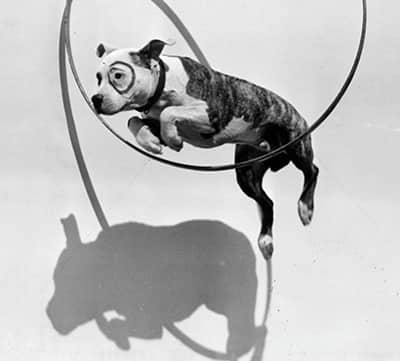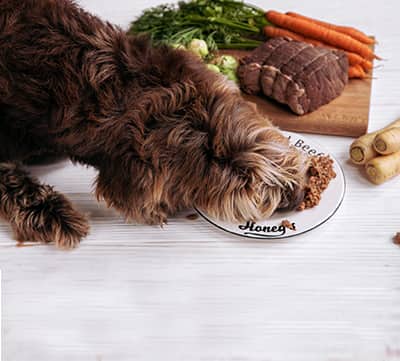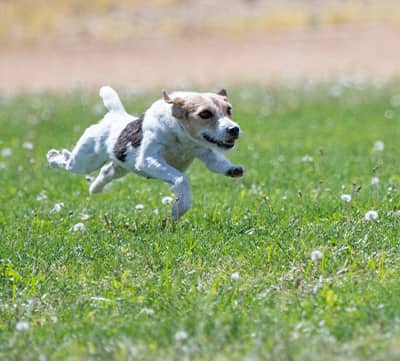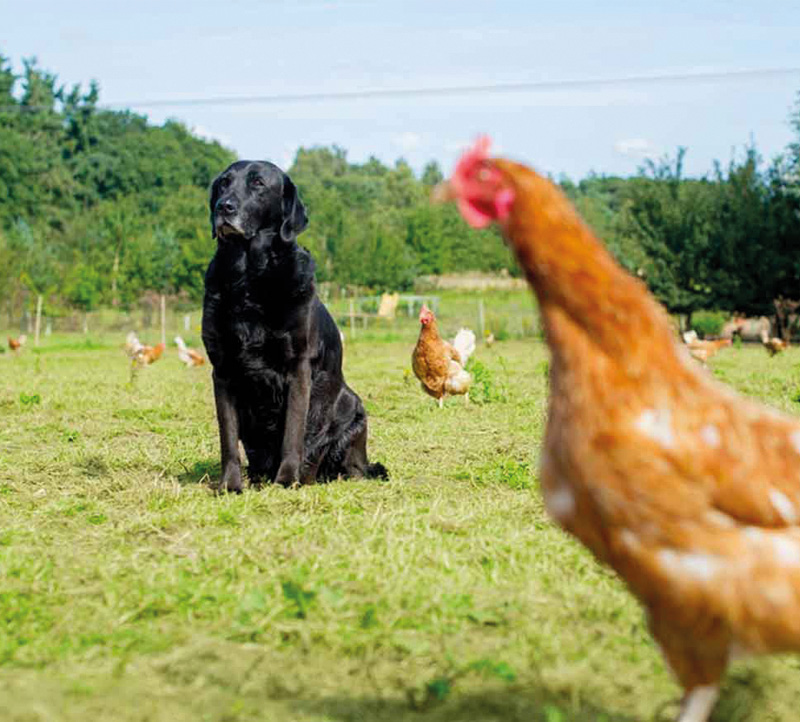Give a dog a bone
‘The first time a vet suggested giving our dog a bone to chew on I was slightly shocked,’ admits Vicky Marshall, the cofounder of Honey’s Real Dog Food. ‘This, I thought to myself, borders on malpractice. The poor dog will choke or, worse, he will swallow a bit of bone and then… well, I wasn’t quite sure what might happen but I felt certain nothing good could come of it.’
Vicky’s initial reaction was by no means uncommon. She had bought into the myth, promoted by the pet food industry, that the only food suitable for dogs was manufactured food, that is to say canned food, dried food, pouched food and a range of treats that included, ironically, fake bones.
Processed dog food is bad for dogs on all sorts of grounds: it is cooked, usually contains lots of grains, uses poor-quality meat and is packed full of preservatives and other harmful chemicals. Its worst failing, however, is that no matter how hard the manufacturers try to replicate the goodness of a natural diet it can’t match the benefits offered by a raw, meaty bone.
In the wild, dogs eat their prey, bones and all
Nature knows best. It is one of those trite things that people say, but, when one stops to think about it, the phrase contains a great truth. In the wild, providing they have a choice, all animals eat what is best for them. For dogs this means small prey or, if hunting in a pack, a share of larger prey. They are thrifty, too. Nothing is wasted and that includes the bones. Initially these are ripped, torn, chewed and sucked to remove all the meat and marrow. Then they are gnawed, crunched and (if small enough) eaten whole.
There has been some fantastically interesting (if gory) research in Australia proving this, in which scientists studied the insides of hundreds of wild dogs (don’t even ask). One study was by a chap called S. J. O. Whitehouse (Australian Wildlife Research magazine, 1977, 4(2): 145–50); another, by a chap called A. E. Newsome (Australian Wildlife Research magazine, 1983, 10(3): 477–86). Hundreds of dogs were examined across a wide geographical area. The results were conclusive not only on the bone issue, by the way, but also on other dietary preferences. No wild dog, for example, ever eats grain. (Note there is more research available on the same topic, including detailed studies by Neville Buck, who studied a wide range of dogs and wolves at Howletts and Port Lympne Wild Animal Parks in the UK.)
Bones are packed full of vital nutrients
It is easy to understand why the dog wants the meat and marrow, but what makes the bone itself so desirable? The answer is that bones contain a huge number of nutrients that are vital to your dog’s health. These include:
- minerals, including calcium, magnesium and phosphorous
- protein-containing essential amino acids, including lysine
- essential fatty acids
- fat-soluble vitamins (A, D and E)
- blood-forming nutrients (these are in the marrow), including copper and iron.
Bones keep your dog’s teeth and gums healthy
Meaty bones are nature’s toothbrushes. They keep your dog’s teeth clean and gums healthy. Plaque can’t build up and decay is prevented. As a result your dog shouldn’t develop any of the nasty oral diseases to which many of those on processed food are prone. It will also mean he or she has sweeter breath.
You may be interested to know that a growing number of vets believe that there is a close connection between oral health and general health. One veterinary dentist who has studied this is Dr Gary Beard, who is based at Auburn University in Alabama. In 1991, he wrote a paper pointing out that heart failure, hepatic compromise, renal failure and other serious diseases in dogs could be a direct result of poor oral hygiene. The same year another US vet, Dr Richard Hamlin, of Ohio State University, proposed that diseases of the heart, liver and lungs could be caused this way.
Bones provide great exercise, and help with mental health
Two further benefits of giving your dog bones should be mentioned:
- They provide your dog with exercise, strengthening their jaws and upper body.
- They keep your dog occupied. Dogs that have a bone to chew are happier and calmer.
A word about marrowbones
Dogs love marrowbones – the marrow being the creamy centre in the middle of the bone. The upside of marrow is that it is high in nutritional value, the downside is that it is high in fat. If you are feeding a dog that is trying to lose weight then either scoop the marrow out or choose another type of bone.
For more information and advice please contact Honey’s – we’ll be happy to help even if you never, ever plan to become a customer.
Web: www.honeysrealdogfood.com
Email: info@honeysrealdogfood.com
Telephone: 01672 620 260







